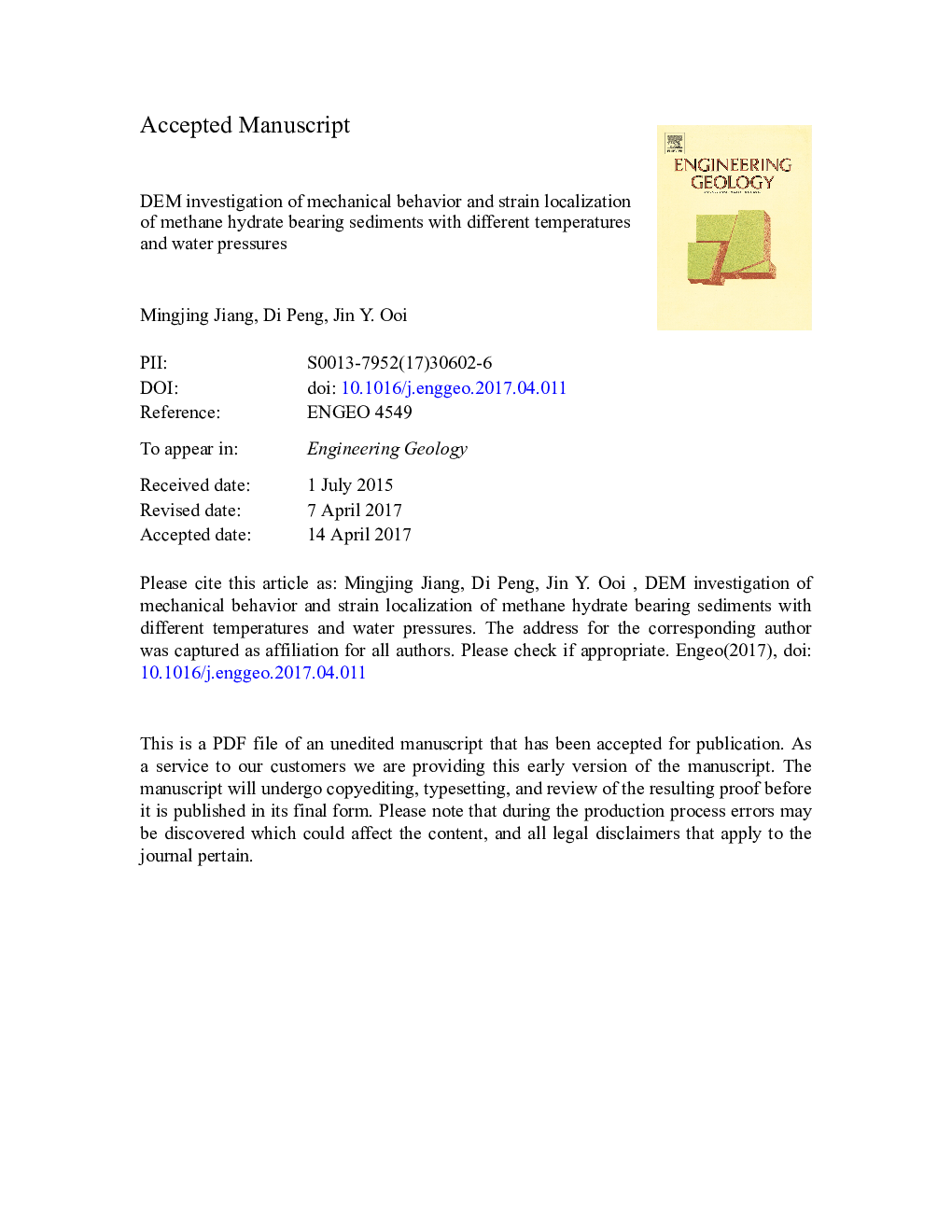| Article ID | Journal | Published Year | Pages | File Type |
|---|---|---|---|---|
| 5787578 | Engineering Geology | 2017 | 71 Pages |
Abstract
This paper investigates the mechanical behavior and strain localization of methane hydrate bearing sediments (MHBS) at different temperatures and water pressures via the distinct element method (DEM). A thermo-hydro-mechanical contact model of MHBS has been employed in the DEM to simulate biaxial tests and mechanical behavior of MHBS is studied with different temperatures and water pressures. Three MHBS specimens are simulated at different temperature-pressure conditions to provide an insight on the evolution of macro and micro variables during strain localization of MHBS, as well as the geometric characteristics of shear band. The results show that MHBS appears to be strain-softening with dilatancy and the existence of MH will increase the cohesion but decrease the friction angle of MHBS. As temperature increases or water pressure decreases, the cohesion and friction angle of MHBS decrease with increasing dilatancy. The strain localization is closely related to bond breakage as well as localization of other micro and macro variables such as contact force chains, principal stress fields, particle velocity fields and average pure rotation rate distributions. As temperature and water pressure change, three different types of shear band can form. The thickness and inclination angle of these shear bands increase as the temperature increases or water pressure decreases.
Related Topics
Physical Sciences and Engineering
Earth and Planetary Sciences
Geotechnical Engineering and Engineering Geology
Authors
Mingjing Jiang, Di Peng, Jin Y. Ooi,
